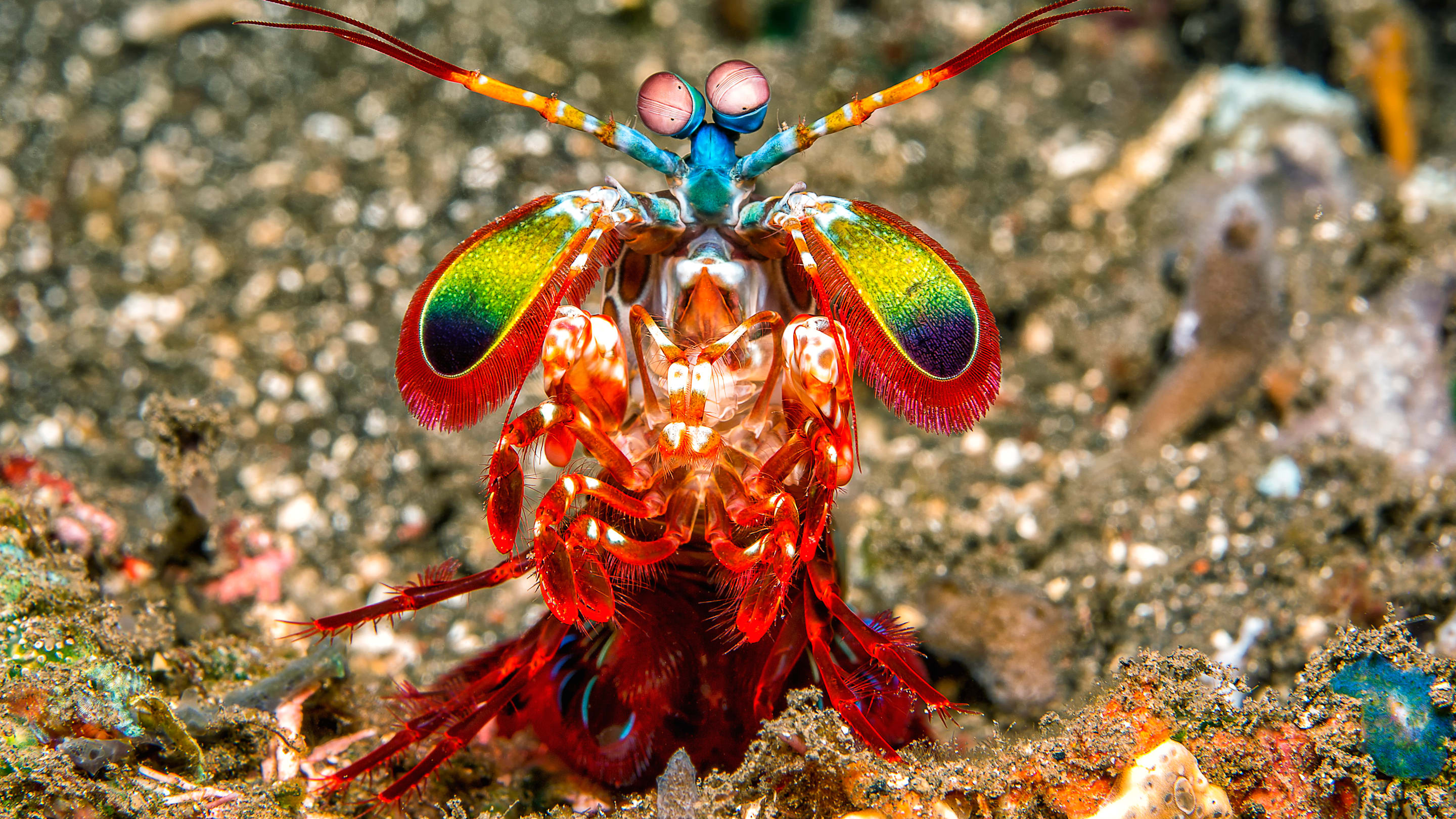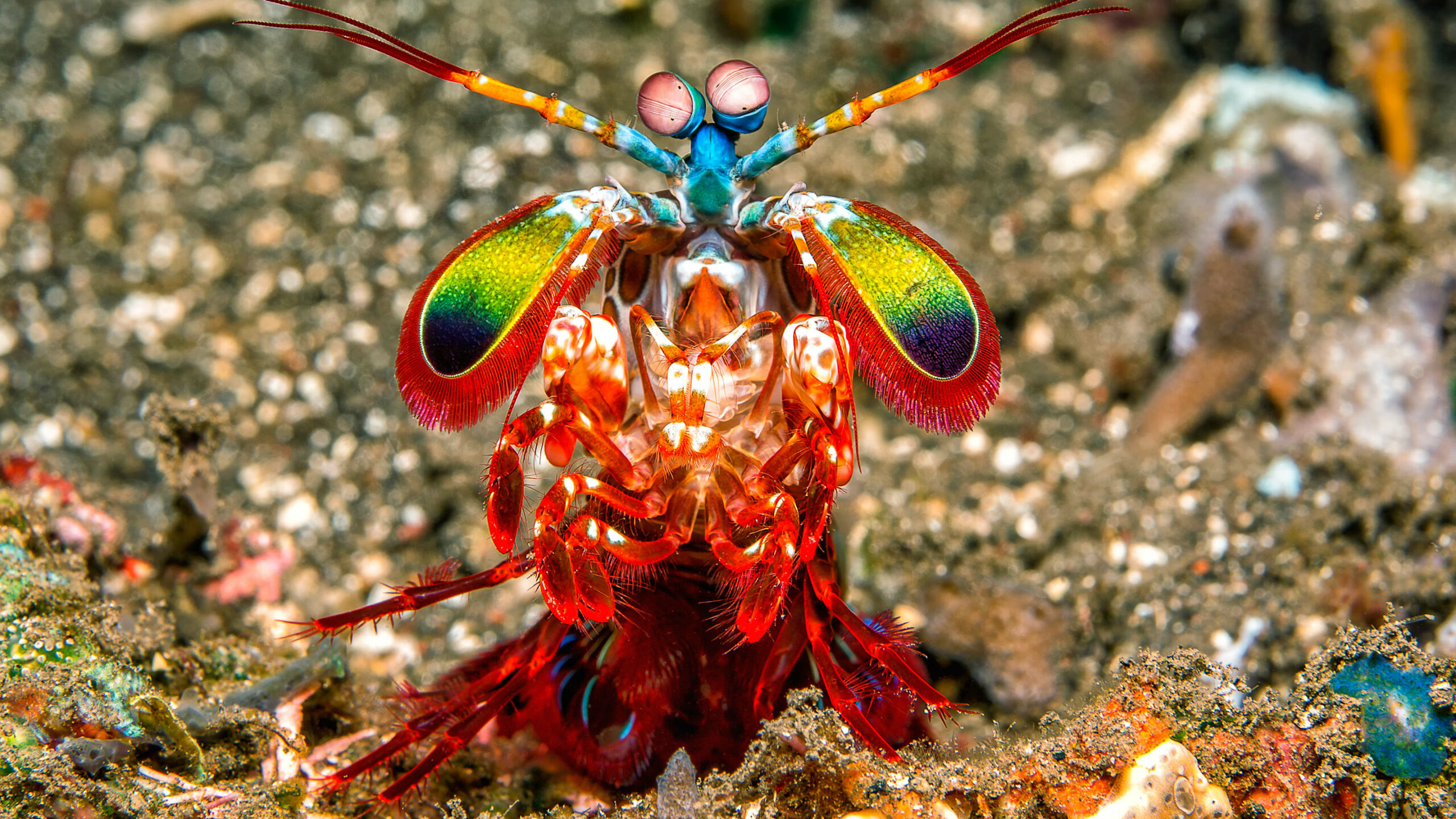“Unbreakable Warriors: How Mantis Shrimp Deliver Devastating Punches Without a Scratch”
Have you ever seen a tiny creature punch like a heavyweight champ and wondered how it escapes unscathed? Enter the mantis shrimp—these pint-sized predators may only grow to about 10 centimeters, but don’t let their stature fool you! Known for their bone-crushing punch that can split shells and maybe even a finger or two, mantis shrimp reveal an incredible adaptation that keeps them safe after delivering such powerful blows. A fascinating study recently published in the journal *Science* dives into the structural secrets of their dactyl clubs—those unique appendages that double as powerful fists. Let’s unravel how this mighty little animal is equipped to punch hard without paying the price! Curious minds can *LEARN MORE* [here](https://www.mentalfloss.com/article/86128/10-eye-popping-facts-about-mantis-shrimp).

Mantis shrimp are generally tiny, averaging 10 centimeters in length depending on the species. Despite their small stature, they pack powerful blows. Species like the peacock mantis shrimp can punch hard enough to crush crustacean shells and split fingers to the bone without hurting themselves. But how do they scuttle away unharmed? A new study in the journal Science sheds light on the question.
Many mantis shrimp use their dactyl clubs, two appendages that act like fists, to strike prey or enemies. The material of their fists is what allows them to withstand such violent forces. Mantis shrimp clubs are made of three specialized layers: the impact surface, the impact region, and the periodic region. The impact surface consists of hydroxyapatite, which is a mineral usually found in bones and teeth. The last two layers are made of chitin, a sugar molecule found in some plants and animals, including the shells of lobsters, shrimp, and insects.
A team of researchers at Northwestern University and other institutions found evidence that specific layers of the dactyl clubs are patterned in a way that filters out sound waves. For their study, the scientists used lasers to examine how high-frequency stress waves spread throughout the shrimp’s body and the microstructure of its armor. They observed that the impact region consists of mineralized chitin fibers arranged in a herringbone pattern, making it resistant to damage. Meanwhile, the periodic region is made of bundles of chitin fiber twisted in such a way that it controls how stress waves travel through the dactyl clubs. As a result, mantis shrimp can throw punches and their built-in boxing gloves will selectively filter out the intense vibrations that might hurt it. You can watch its flying fists in action in the video below.
While these observations were based on 2D simulations of wave behavior, the study’s senior author Horacio D. Espinosa said in a statement that 3D simulations of dactyl clubs are required to fully understand their structure. The authors suggest that their findings could be used to develop sound-filtering materials for protective gear, potentially reducing blast-related injuries in the military and sports.
Read More About Underwater Animals:




















